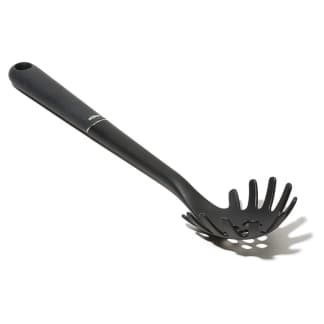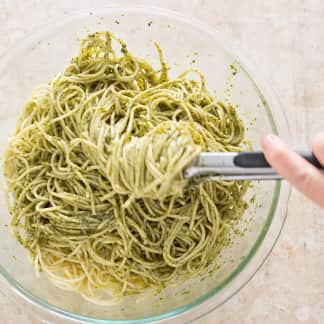Reviews You Can Trust.
See Why.
Whole-Wheat Pasta
Whole-wheat pasta used to be awful, with mushy texture and a cardboard taste. Have manufacturers finally figured out how to make it rival white pasta?
Editor&aposs Note:UpdateJanuary 2012
Top Pick

WinnerBionaturae Organic 100% Whole Wheat Spaghetti
Sign up for the Well-Equipped Cook newsletter
Shop smarter with our ATK Reviews team's expert guides and recommendations.
What You Need to Know
Whole-wheat sandwich bread we get. But whole-wheat pasta? We’ve always found these tan-streaked noodles so mushy, gritty, and overbearingly wheaty that we questioned their place under a blanket of marinara—or most any other sauce. If we wanted to incorporate more fiber into our diets, we would simply bite into an apple.
That’s been our stance for years, and it went unchallenged the last time we tasted a healthy handful of whole-wheat spaghettis in 2005. But the market for alternative strands, spirals, and shells has blossomed since then. Now consumers can choose from a bumper crop of brands made from 100 percent whole durum wheat (the same high-protein variety that’s refined for use in the best white pastas) as well as blends that combine whole durum wheat with varying amounts of the refined stuff. Joining these choices are multigrain pastas engineered from wheat and a hodgepodge of alternatives, such as barley, flaxseed, oats, and spelt. As improbable as some of their ingredients sounded, the sheer number of new choices got us wondering: Would any boast enough complex, nutty flavor and firm, springy texture to actually make us glad we’d reached past the white pasta?
Separating the Wheat from the Chaff
The first order of business was to narrow the playing field. Tasters sat down to an elimination round of 18 spaghettis tossed in olive oil, taking in enough carbs to fuel a marathon. We weren’t surprised when almost half of these pastas were declared inedible. Crimes included a “gummy” texture that was akin to eating “chewed bread” and “ weird” off-flavors that had more in common with “bran cereal” than traditional spaghetti.
That said, even the most diehard traditionalists among us were shocked to find that a few of these newfangled noodles were actually decent—even good. We held two more rounds of tastings, tossing our 10 finalists with marinara sauce, then pesto. Tasters still panned half the pastas, but others brought raves: “Good! Great texture—just like white pasta,” enthused one surprised taster. “Buttery, smooth, yummy,” said another. Several brands in particular triggered the same comment again and again: “Is this really whole wheat?” When we tallied the final scores, we had not just one spaghetti to recommend but three.
How had these three pastas managed to distinguish themselves, when so many of the others were flat-out awful, with textures like “shaggy carpet” or “finely ground sawdust” and “fishy” overtones reminiscent of “stale vitamins”? We turned over the boxes of our winners to inspect their ingredients. Therein lurked the discrepancy: Two out of the three champs were not fiber-rich at all. Despite a label trumpeting “good source of whole grain and fiber,” the fine print of our top-rated brand revealed that refined wheat is its main ingredient. In fact, when we checked with the manufacturer, we found that whole wheat constitutes just 21 percent of its makeup. Our third-place strand was even more of an impostor. Made from refined wheat and a “grain and legume flour blend” that includes ground lentils, chickpeas, and oats, this pasta has plenty of protein—but zero whole grains. No wonder tasters were prompted to ask if these contenders were “really” whole wheat.
A Real Ringer
Then came the ringer. While most of its 100 percent whole-grain brethren landed toward the bottom of the rankings for “sour” taste and “gritty” texture, one spaghetti boasted the same “chewy,” “firm” bite as the pastas with little or no whole grains. Plus, its particularly pleasing “nutty” flavor was not only compatible with marinara sauce but so “hearty” and “complex” that it enhanced the rustic herb-and-garlic flavors of the pesto. Our tasters ranked it a close second, some even declaring it “more flavorful than white pasta.”
How had this manufacturer succeeded where the majority had failed? To understand, we educated ourselves about processing. For white pasta, the whole-wheat kernel is stripped of its bran and germ, leaving only the neutral-tasting endosperm. Whole-wheat pasta retains all three of these components, typically to the detriment of texture and taste; the fiber-rich bran has the potential to give noodles a sandpapery quality, while the nutrients and oils in the germ are prone to oxidation, leading to fishy flavors. Bran also inhibits the gluten development essential to a strong internal structure, which keeps the pasta firm and chewy when cooked. The bran literally wedges itself between strands of gluten as they form, preventing them from connecting. The result? Mushy pasta.
Due Process
The manufacturer of our winning pasta seems to have found ways around these obstacles. First, the company claims to ensure good flavor by custom-milling its flour for each production run, so the oil in the germ never has a chance to oxidize and turn rancid. Second, they’ve resisted the trend to replace old-fashioned bronze-lined metal dies with slick Teflon-lined dies that more quickly extrude the pasta paste into different shapes (much like pushing cookie dough through a press). Bronze dies subject the paste to more friction, generating pressure and heat—both of which boost gluten development.
Finally, while most pasta manufacturers quick-dry pasta at high temperatures to speed production, this company opts for a low-and-slow drying method, which it credits with developing complex wheaty flavor. More likely, the benefit of slow-drying lies in the texture of the finished pasta, according to Kansas State University pasta processing expert Sajid Alavi, an associate professor of grain science and industry. Slow-drying at a controlled temperature, he said, will result in pasta strands that resist microscopic cracking and remain more intact during cooking.
At the end of the day, one brand’s superior taste and texture—and the fact that among the top three strands, it alone was the only true whole-grain pasta—convinced us to bump it from second to first place. Will we abandon white pasta altogether? No, but the next time we want robust wheat taste, we’ll know which brand to choose.
America's Test KitchenWatch Now
Everything We Tested
Recommended

WinnerBionaturae Organic 100% Whole Wheat Spaghetti

Heartland Perfect Balance Spaghetti
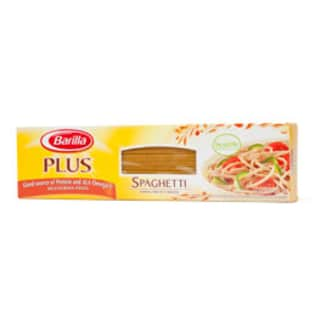
Barilla Plus Multigrain Spaghetti
Recommended with reservations

Heartland Plus Spaghetti
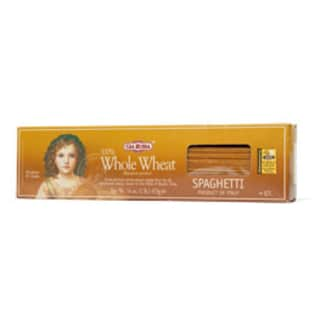
Gia Russa 100% Whole Wheat Spaghetti
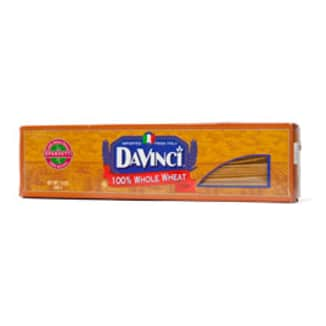
DaVinci 100% Whole Wheat Spaghetti
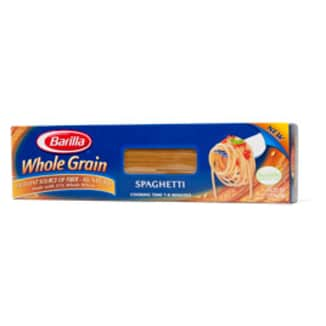
Barilla Whole Grain Spaghetti
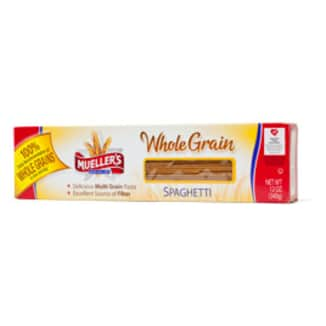
Mueller's Whole Grain Spaghetti

Ronzoni Healthy Harvest Whole Wheat Pasta Blend
Not Recommended
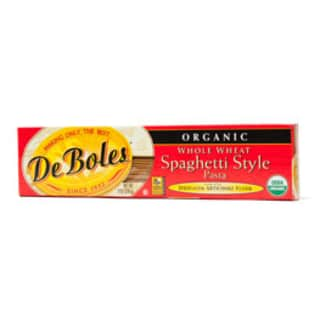
Deboles Organic Whole Wheat Spaghetti Style Pasta
*All products reviewed by America’s Test Kitchen are independently chosen, researched, and reviewed by our editors. We buy products for testing at retail locations and do not accept unsolicited samples for testing. We list suggested sources for recommended products as a convenience to our readers but do not endorse specific retailers. When you choose to purchase our editorial recommendations from the links we provide, we may earn an affiliate commission. Prices are subject to change.
Reviews You Can Trust
The mission of America’s Test Kitchen Reviews is to find the best equipment and ingredients for the home cook through rigorous, hands-on testing. Have a question or suggestion? Send us an email at atkreviews@americastestkitchen.com. We appreciate your feedback!
Reviews You Can Trust.
See Why.


